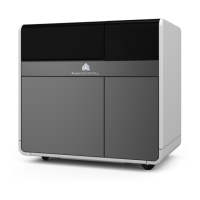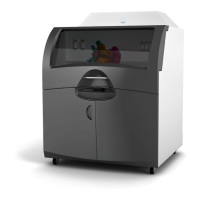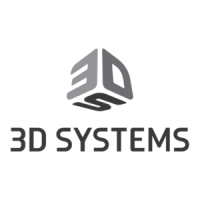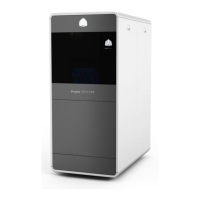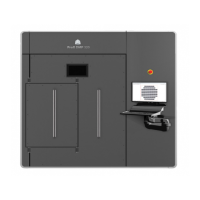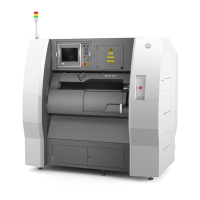4
MATERIAL HANDLING
Emergency (GHS/SDS)
Chemtrec USA (800) 424-9300; Europe +1-703-527-3887
Packaging Inspection
The material cartridges are packaged in shipping cartons. Upon receipt of material
shipments, inspect cardboard carton exterior for signs of damage and leakage. If
leakage is observed, DO NOT open carton, and contact 3D Systems’s Technical
Support Hotline. If no leakage is observed, keep the material cartridges in their cartons
and store until material is needed.
Part Building
If uncured material is observed on the part or platform after build, this is an abnormal condition, and is an indication the 3D printer
system requires servicing by 3D Systems or a certied servicing reseller.
Assume any liquid or paste-like material is part material. Do
not directly touch uncured part material without protective nitrile gloves. Discontinue use of the printer pending service by a 3D Systems
Technical Support Representative.
Flammability and Combustibility
Do not expose materials to heat at or above 230°F (110°C), ames, sparks, or any source of ignition. (Though the U.S. Department of
Transportation does not consider VisiJet materials a “ammability hazard,” they do classify them “combustible” based on ash points.)
For more information on VisiJet material ash points and combustibility, see VisiJet® Material Handling and Post Processing Guide.
Personal Protection Equipment
Exposure to uncured part material may occur when removing and disposing of the waste bag. To prevent contact,
wear chemically resistant protective nitrile gloves - Do not use Latex gloves.
In the event of a leak or spill of uncured part material, wear safety glasses with side shields to provide eye
protection.
Because of the 3D printer system’s built-in engineering controls, respiratory protection is not necessary during
normal operation. A NIOSH-approved (or equivalent) dust mask is recommended when dry sanding cured material
parts.
Regulatory Information
• Support material has no known regulatory requirements.
• In the U.S., uncured part material is subject to special EPA disposal regulations and record-keeping requirements. “Uncured
VisiJet® material” includes any part material cartridge (empty or full), and waste bag which is partly uncured part material. For
complete disposal regulation details, see the Appendix in your Material Handling Guide.
• In the U.S., you must keep the following disposal records for ve years after the date of disposal:
• The quantity of part material received (new or “virgin”).
• The name and address of the shipping location (the “responsible party” - generally your waste disposal service provider).
• The quantity of part material shipped (disposed). For further information, see your Material Handling Guide.
• For assistance, contact 3D Systems Technical Support.
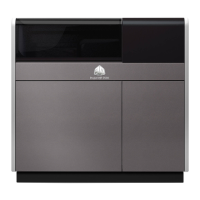
